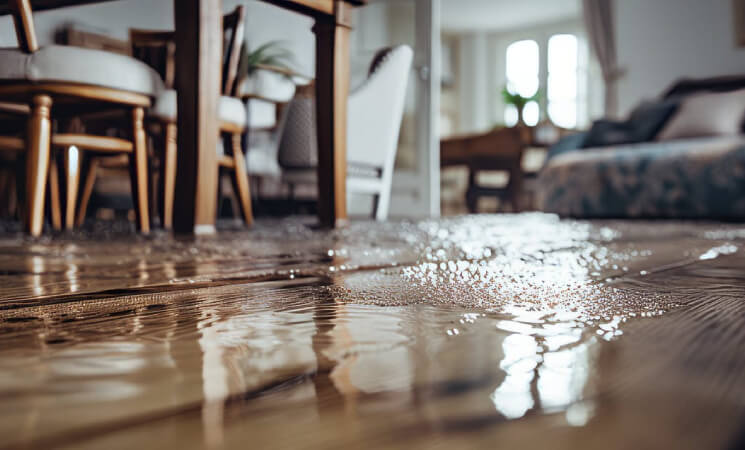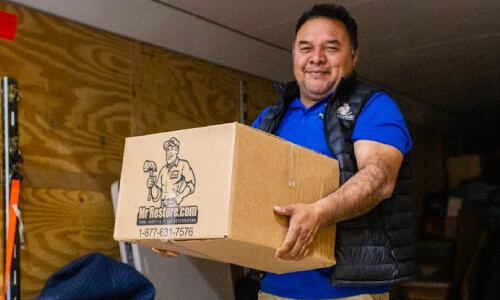According to the National Fire Protection Agency of the United States, almost 400,000 fires happened annually between 2011 and 2015. That is a startling statistic that is troublesome to those living in warm areas plagued by forest fires. Sometimes, there’s nothing you can do to stop fires, and you must resort to picking up the pieces when the damage is done. However, you can make that process much easier by calling the right people for fire damage restoration in Fort Worth, TX. That’s us, Mr. Restore. We have over half a century of experience mitigating and restoring damage done by fire. We understand how crucial it is to act swiftly when a fire strikes. Even after it is put out, residual damage has to be nipped in the bud so that further damage doesn’t follow. These crucial repairs and replacements need to be made quickly so that damage in one part of the home doesn’t spread to the other. Our trained professionals are equipped with years of wisdom and experience in fire restoration and can get to work right away.
Different Types of Fire
A house fire is always bad; however, it depends on how it started and how long it went on to assess the damages. Usually, fires that involve chemicals and greases are considered worse than, say, a candle. Fire damage restoration in Fort Worth, TX, is especially tricky if grease fires are involved. In fact, there are six types of fire damage that you can deal with. And we have the proper protocols to address them all.
Class A
This refers to fires resulting from flammable solids, including paper, wood, cloth, plastics, etc. These are the most common types of fires in a home when curtains, clothes, appliances, or mattresses can catch fire. This type of fire can be aggravated in a small room or storage room with many surrounding objects.
Class B
This refers to fire caused by liquefied solids or liquids. This can include melted wax, petroleum jelly, kerosene, gasoline, paints, etc. To prevent class B fire, keep flammable liquids and solids in a metal or fire-resistant cabinet. Usually, fire damage restoration in Fort Worth, TX, is the hardest when dealing with these sorts of fires.
Class C
C-type fires are caused by gaseous substances, such as natural gas and cooking gas, that are found in homes. Exploding stoves and gas leaks are typically the main causes of these types of fires. Butane, propane, methane, hydrogen, and other types of gases can cause class C fires. These are usually extremely explosive and can result in huge explosions if not put out quickly. This type of fire can cause substantial monetary damages; thus, its damage restoration in Fort Worth, TX, is more extensive.
Class D
Combustible metals like sodium, magnesium, and potassium cause these fires. These metals are extremely reactive to the air and, in some cases, need to be stored in oil to stop reacting with oxygen. Even when placed in water, these metals undergo reactions that start fires. Hence, it is very important to isolate them from the atmosphere and keep them as far away from fire as possible.
Class E
This is a combination of fires caused by class A and B, along with electrical damage. Think blown fuses, overloaded circuits, or damaged electrical circuits causing sparking and causing fires. The basement can be used for storage and placing housing electrical panels and fuse boxes, so that makes a deadly combination. A key part of fire damage restoration in Fort Worth, TX is fire prevention, which is the most basic thing you can do.
Class F
This type of fire again goes back to the kitchen and focuses on greases, oils, and fats causing fires. The presence of oily rags, spills, improper cleanup, and improper storage of oils around the house can cause these fires. It just takes a random spark or an improperly put-out match to get the blaze going. And since these fats are made for cooking, they spread fire uncommonly fast. They also cause more severe burns to the skin than waxes and gasoline since they burn at higher temperatures. A bit of common sense and care can prevent these fires.
Different Types of Damages
Many different types of fire damage can occur. These are related to direct and indirect types of damages that occur. For instance, primary fire damage results due to the heat and corrosion directly from the flames of the fire. This results in burnt furniture, burnt infrastructure, etc. Fire damage restoration in Fort Worth must be done quickly to avoid further damage to any other parts of the building or the home. On the other hand, secondary fire damage occurs due to the substances made corrosive by the fire and the smoke from the fire. Secondary damage has a tendency to create a positive feedback loop too. For instance, it can cause damages that can feed the fire and so on and so forth. An example is that of a windy day that forces the fire to spread faster than before, causing it to get bigger and thus causing fumes that can create a localized climate that pushes it even further. This makes fire damage restoration in Fort Worth, TX, much more difficult. Fire damage restoration in Fort Worth, TX can be a daunting task, especially with the emotional and physical damage that a fire leaves. The situation can seem very bleak. However, since Mr. Restore has dealt with all kinds of damages in the past, we’ll give you the best help that is possible. For the best fire restoration in Fort Worth, TX contract Mr. Restore immediately. Our trained professionals are waiting patiently for your call.






